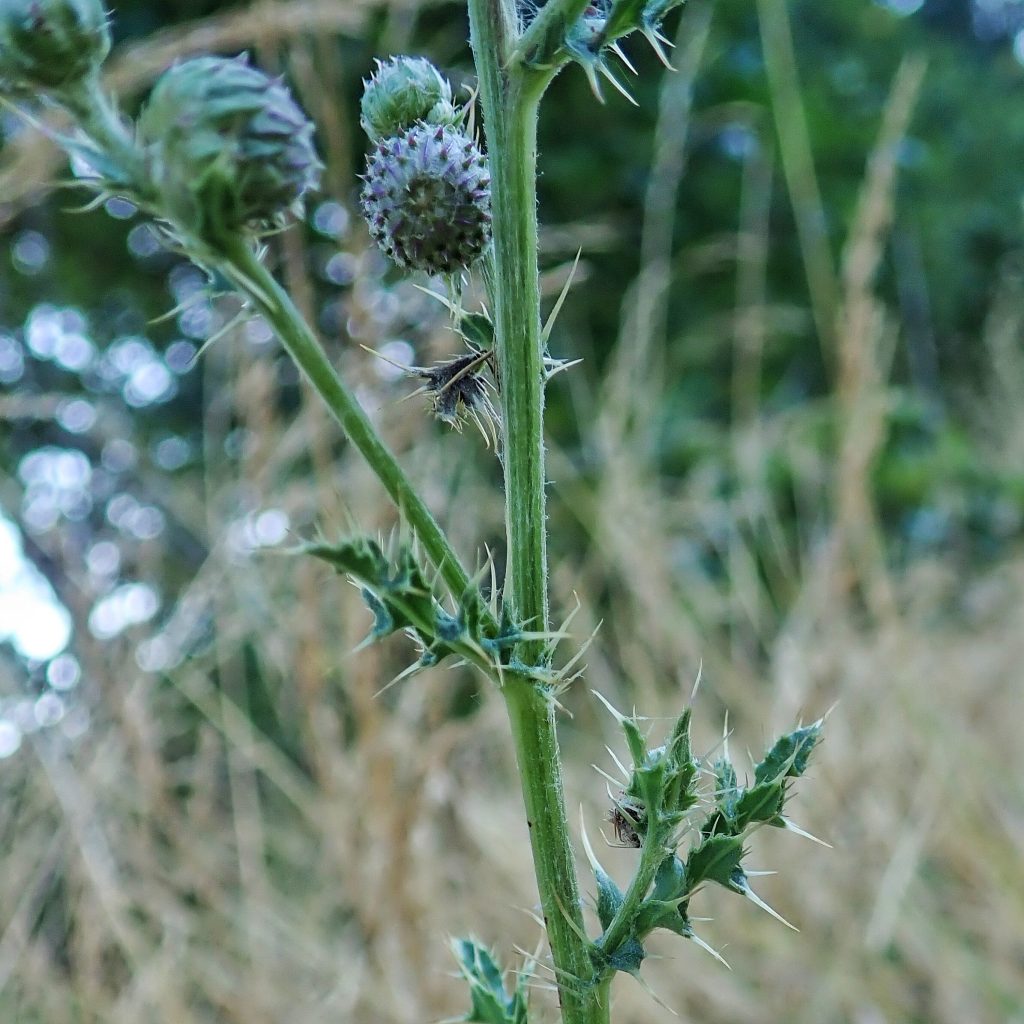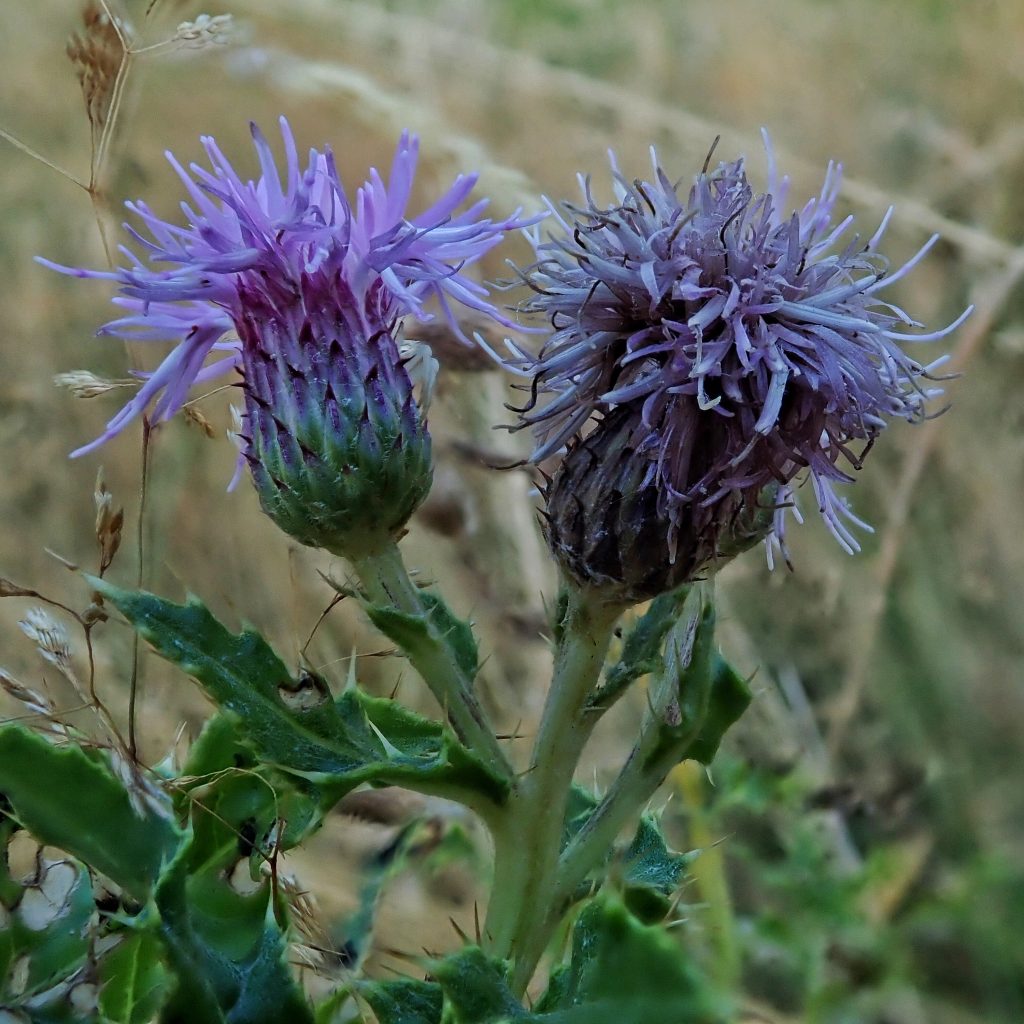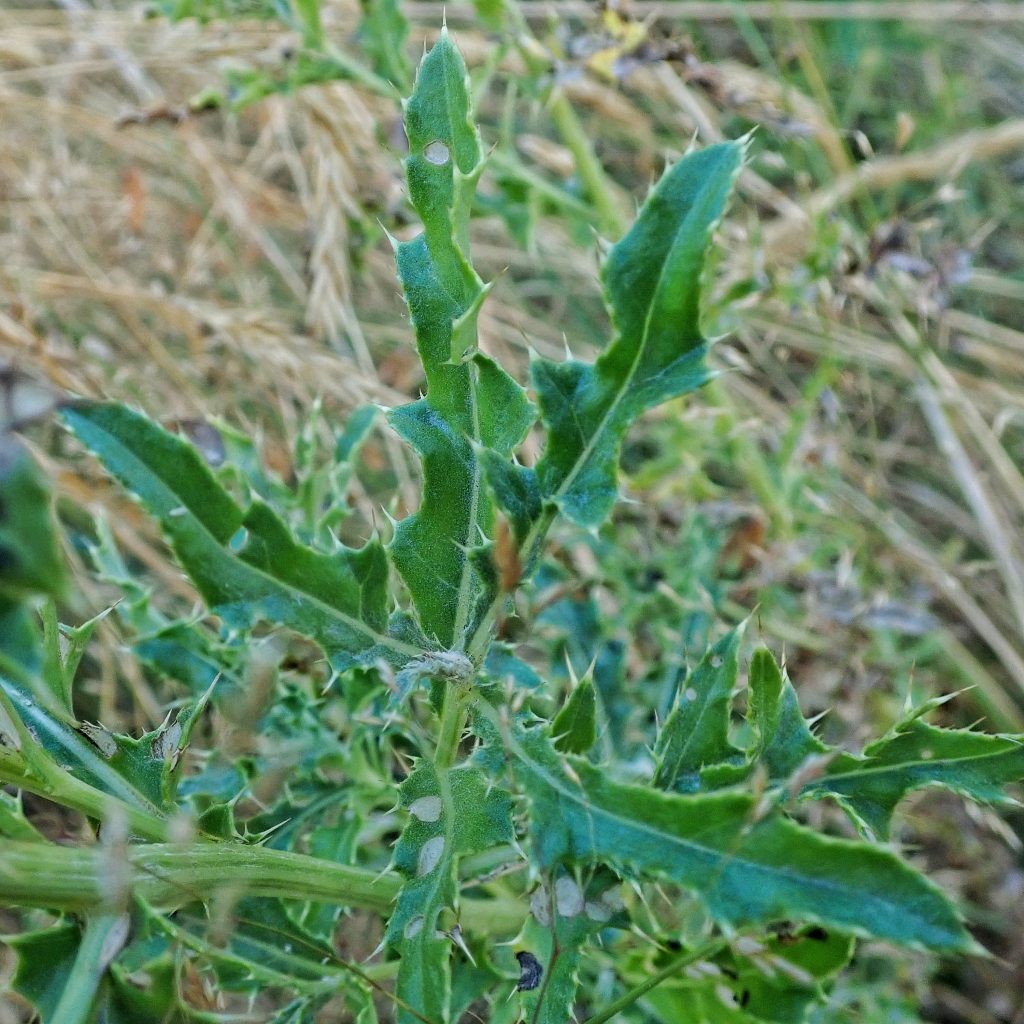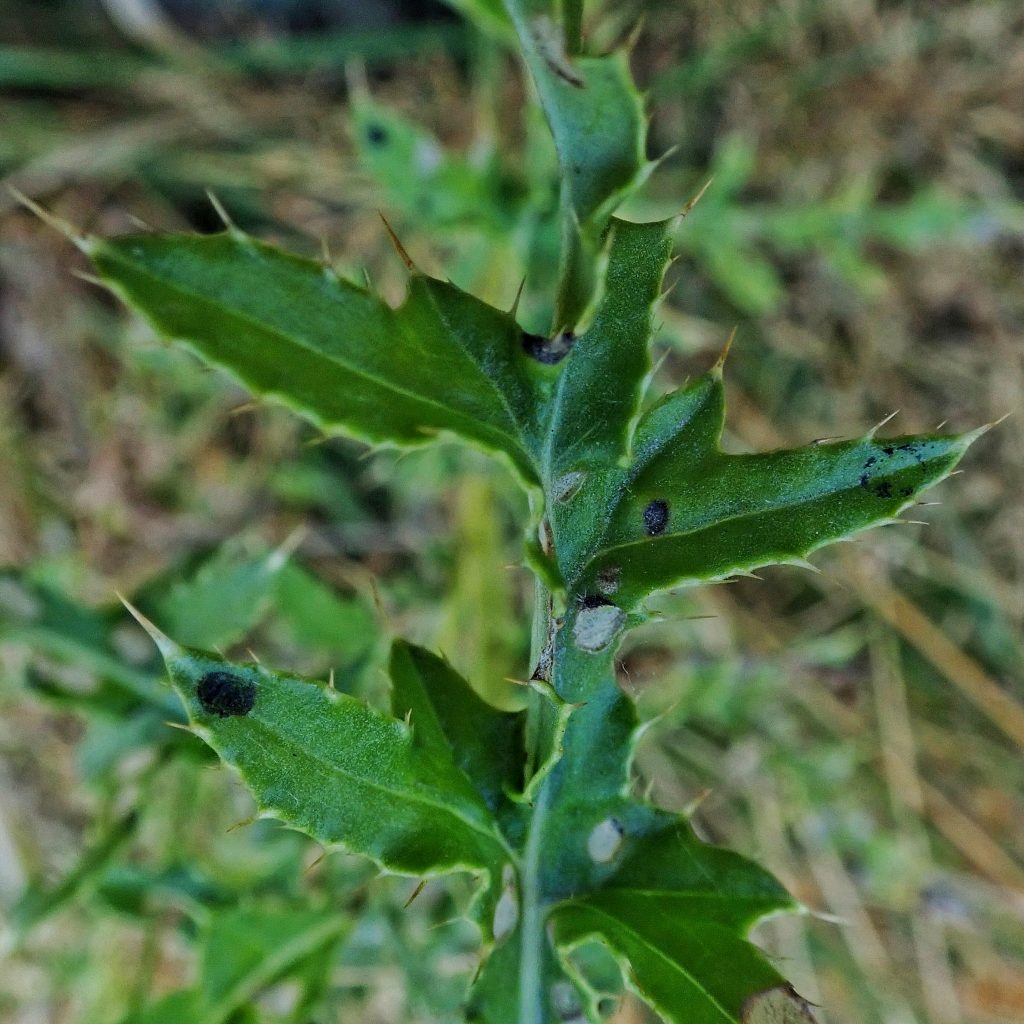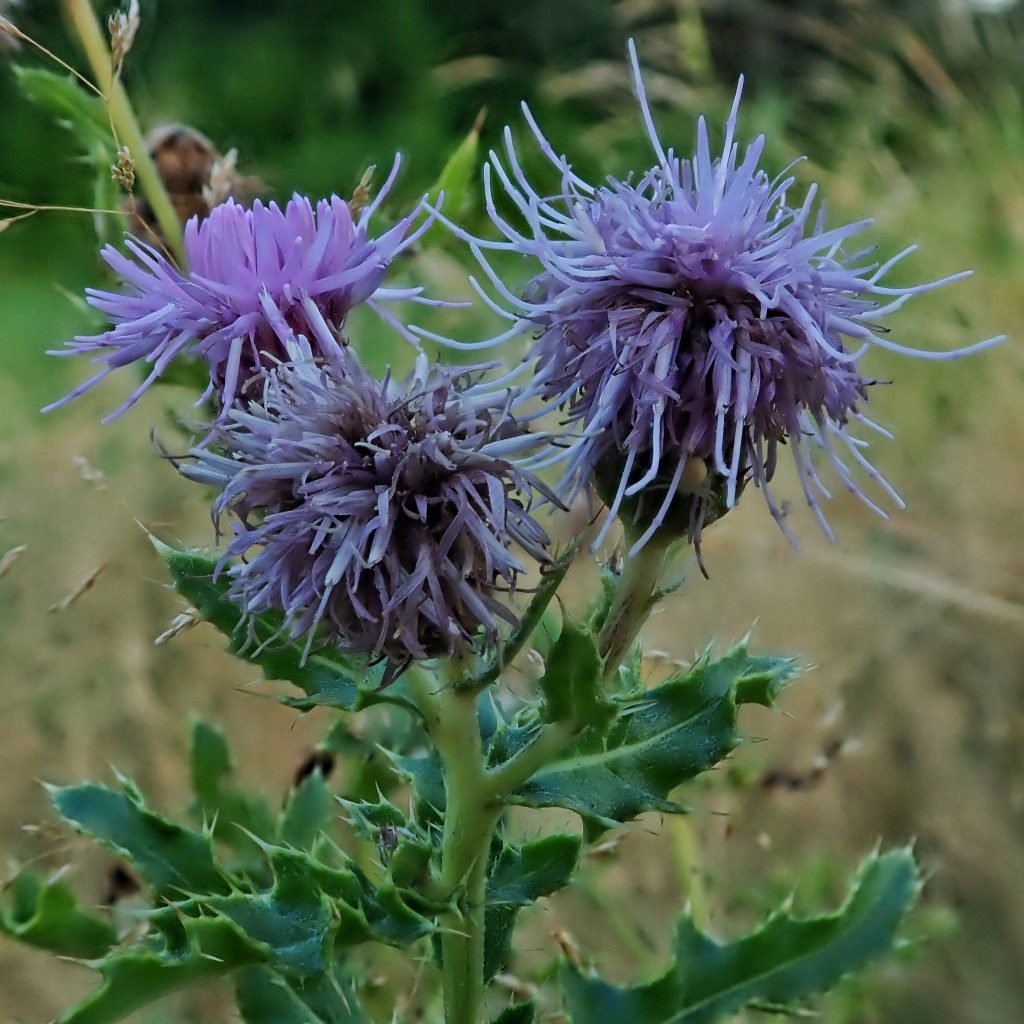
The most common common name for this plant is Canada Thistle, a misnomer because it is actually native to Eurasia and northern Africa. The common name in its native lands is Creeping Thistle, which is very appropriate since it not only spreads by seeds but by sending out rhizomes which put out erect shoots, which leads to it forming dense colonies.
This plant is a perennial, and seldom gets more than 4’ tall. Flower heads are smaller (3/4”) and more cylindrical than most Cirsium sp., and are in clusters at the end of the branches. The stem is relatively spineless and hairless. Leaves are clasping, deeply lobed and spiny at the lobes, mostly smooth on the dorsal surface, but downy on the ventral side.
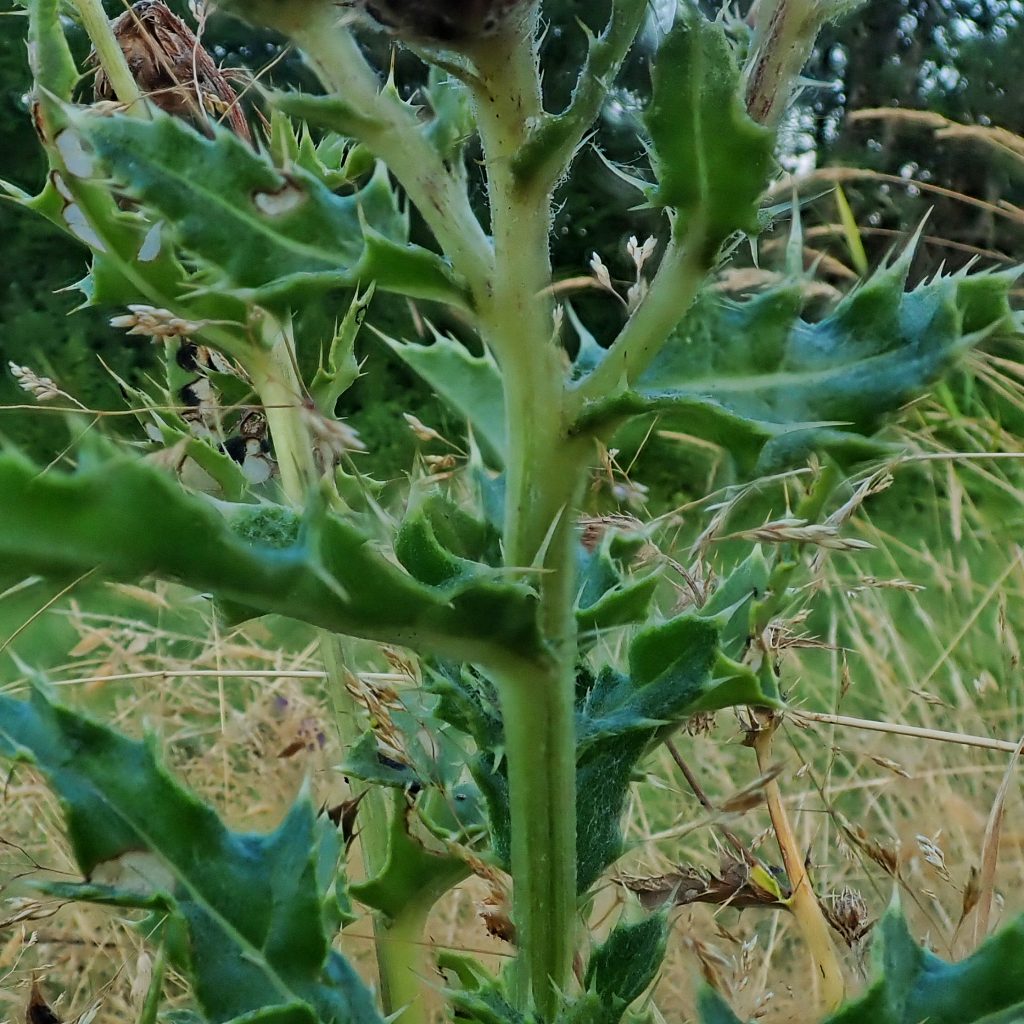
This plant is a good nectar source for insects. The seeds provide food for American and Lesser Golfinches and other birds, and the pappus is often used to line nests. Painted Lady (Vanessa cardui) and American Lady (Vanessa virginiensis) butterflies, and Small Engrailed Moths (Ectropis crepuscularia), among others, use this plant as a larval host.
It is found in disturbed ground in every county in our region.
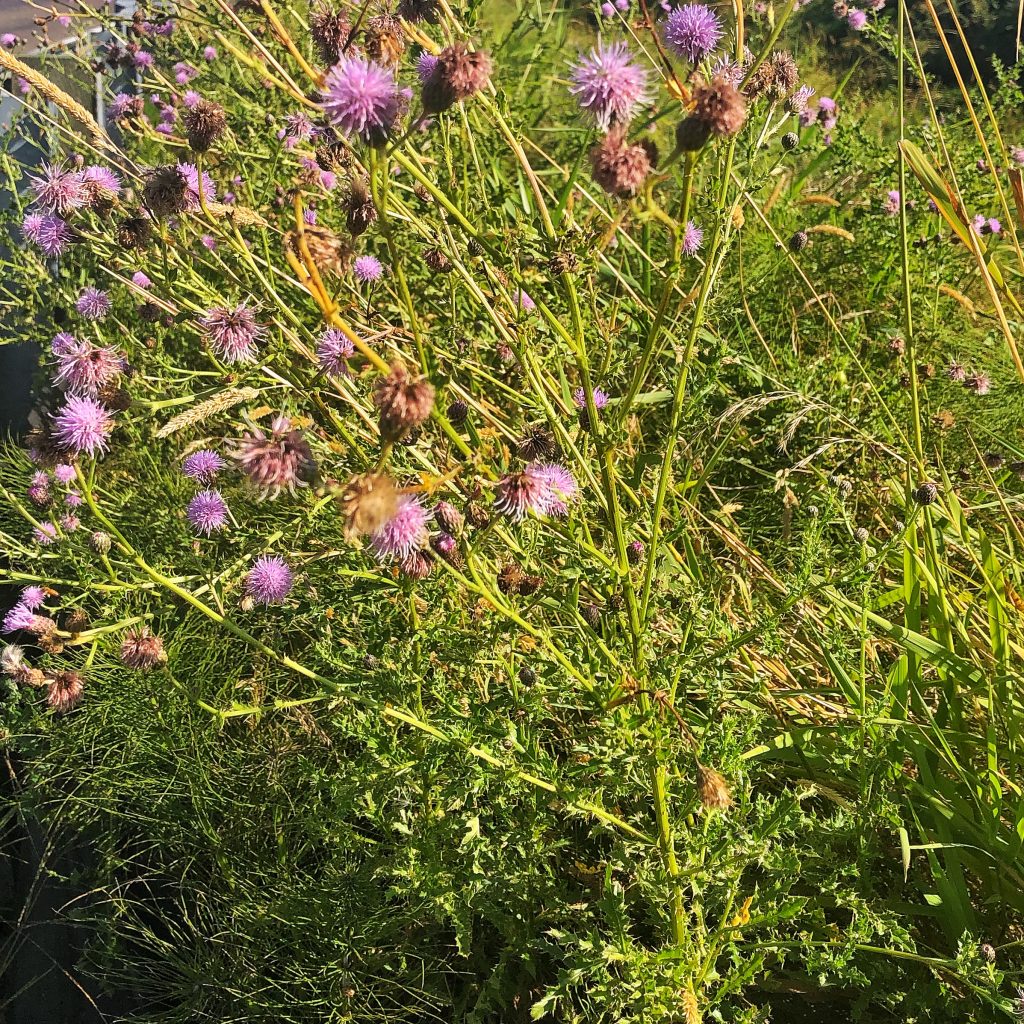
Cirsium arvense | Canada Thistle | Wildflowers of the Pacific Northwest
Washington State Noxious Weed Control Board
https://www.illinoiswildflowers.info/weeds/plants/canada_thistle.htm
https://pfaf.org/user/plant.aspx?LatinName=Cirsium+arvense
Size- Up to 4’ tall
Habitat- Disturbed and agricultural ground
Range- Region wide
Blooms- All summer
